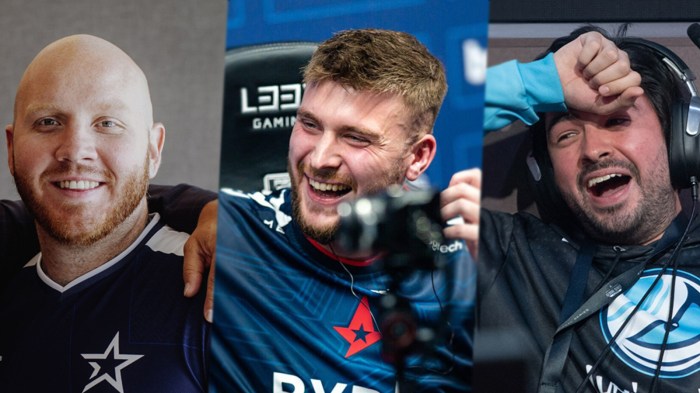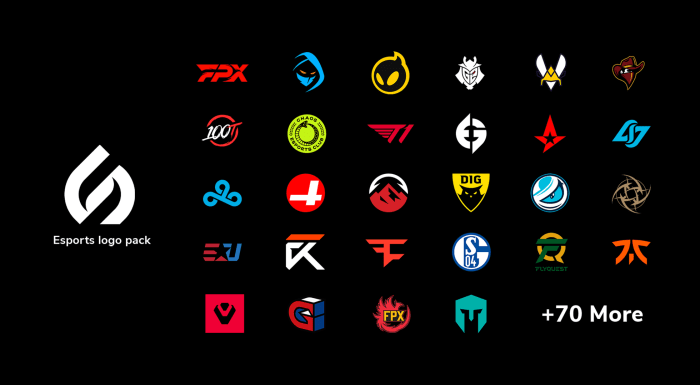
Welcome to the dazzling world of esports organizations, where pixels meet profit and gaming dreams become grand realities! Picture this: a realm where pro gamers don’t just wear jerseys, they wear crowns! These organizations are the backbone of the esports universe, crafting teams that battle it out for supremacy in the digital arena.
Esports organizations are structured like a well-oiled machine with hierarchy levels that could rival a corporate boardroom, complete with managers, players, and marketers all working in harmony to make esports not just a hobby, but a thriving industry. From household names like Team Liquid to giants like Cloud9, these organizations are captivating audiences globally while sculpting the future of competitive gaming.
Overview of Esports Organizations
Esports organizations are like the Avengers of the gaming universe—gathering teams of players, coaches, and analysts to compete at the highest levels of electronic sports. They play a pivotal role in shaping the gaming industry, organizing competitions, fostering talent, and creating vast entertainment landscapes. Like the best pizza, they provide a little bit of everything: strategy, teamwork, and some serious skill, all baked into a competitive environment that keeps fans on the edge of their seats.The structure of esports organizations is often as intricate as a multi-layer cake, with various roles and responsibilities layered on top of each other.
Typically, organizations are led by a management team that oversees operations, marketing, and sponsorships. Below them, you find coaches and analysts who strategize and prepare players for competition. At the heart of the organization, you’ll encounter the players—the stars of the show—along with support staff like nutritionists and psychologists, ensuring that these virtual warriors are in peak condition for battle.
Structure and Hierarchy of Esports Organizations
Understanding the organizational structure is crucial for grasping how esports teams function effectively. Here’s a breakdown of the various components that make up a typical esports organization:
- Management Team: The brainiacs behind the scenes, responsible for business strategy, partnerships, and the overall vision for the team.
- Coaching Staff: The wise yodas who train players, analyze opponents, and develop strategies that make opponents weep.
- Players: The elite warriors who put their skills on display, competing in leagues and tournaments worldwide, winning hearts and prize money.
- Support Staff: From psychologists to dietitians, these folks ensure players are not just gaming machines but well-rounded individuals.
- Content Creators: The storytellers of the organization, creating captivating content that keeps fans engaged across various platforms.
- Analysts: The number crunchers who dissect gameplay, providing insights that help improve performance and strategies.
Major players in the esports organization landscape include some heavyweight contenders that have made significant impacts on the scene. These organizations are not just teams; they are brands that have built empires around competitive gaming. Here’s a glimpse of some of the titans in esports:
- Team Liquid: A pioneering organization known for its success across multiple games, making them as recognizable as a celebrity chef in the culinary world.
- FaZe Clan: Not just a team but a cultural phenomenon, blending gaming with lifestyle and entertainment in a way that’s as smooth as butter on toast.
- Cloud9: Famous for their vibrant branding and diverse roster, they are often the first choice for aspiring esports athletes.
- G2 Esports: Known for their flamboyant style and charismatic personalities, they are the rockstars of the esports arena.
- Fnatic: A veteran organization with a rich history, they have endured the test of time, much like the classic video games that never get old.
“In esports, it’s not just about playing games; it’s about building a community and creating a legacy.”
Marketing Strategies in Esports Organizations
In the electrifying world of esports, marketing strategies aren’t just about slapping logos on jerseys and calling it a day. Nope! The leading esports organizations are flexing their marketing muscles harder than a gamer after a double espresso and a marathon session. These strategies are as varied as the characters in a MOBA game, each with their own role to play in capturing the hearts—and wallets—of fans and sponsors alike.Esports organizations employ a cocktail of innovative marketing strategies to elevate their presence and engage their audience.
Key tactics include collaboration with influencers, interactive content creation, and leveraging data analytics to tailor their marketing efforts. By analyzing viewer habits and preferences, organizations can craft campaigns that resonate deeply with their fanbase. This data-driven approach not only maximizes engagement but also helps in strategizing sponsorship deals that are hard to resist.
Successful Sponsorship Deals in Esports
Sponsorship deals in esports are like the golden tickets to the chocolate factory—everyone wants one! These deals provide essential funding and resources while enabling brands to tap into a youthful and engaged audience. Here are some standout examples:
- Team Liquid and Alienware: This partnership has been a match made in gaming heaven. Alienware, the high-performance gaming PC brand, has not only provided tech support but also exclusive equipment for Team Liquid, which has significantly enhanced their performance. The visibility of Alienware alongside one of the most respected teams in esports has paid dividends.
- Cloud9 and American Express: Cloud9 made waves with their partnership with American Express, introducing unique offers for cardholders that included exclusive access to events and content. This creative approach transformed traditional sponsorship into a win-win for both parties.
- FaZe Clan and G FUEL: FaZe Clan’s deal with G FUEL has become iconic. G FUEL not only sponsors the team but also collaborates on limited-edition flavors inspired by FaZe members, creating a strong brand connection with fans. It’s a delicious way to keep the energy up during those long gaming sessions!
Audience Engagement through Social Media
The digital playground of social media is where esports organizations truly shine, turning their followers into an interactive community of passionate fans. By engaging audiences on platforms like Twitch, Twitter, and Instagram, these organizations create a two-way street that fosters loyalty and excitement. Here’s how they do it:
- Live Streaming: Organizations often stream their practice sessions and matches on platforms like Twitch, allowing fans to get up close and personal with their favorite teams. This transparency not only builds trust but also makes fans feel like they are part of the team.
- Interactive Content: Esports organizations create polls, quizzes, and interactive posts that encourage fans to participate. For example, a team might ask fans to vote on their next merch design, giving them a stake in the organization’s identity.
- Behind-the-Scenes Content: Posting behind-the-scenes videos and player interviews gives fans an insider’s look, making them feel like they’re part of the action and not just spectators. This creates a deeper emotional connection with the brand.
“In the world of esports, the audience isn’t just watching; they’re participating in a vibrant community.”
Growth and Development of Esports Organizations

In recent years, esports organizations have taken the world by storm, growing faster than a high-speed internet connection on a gaming day. The explosive popularity of competitive gaming, combined with the rise of technology and social media, has turned this niche into a massive industry. With millions of fans tuning in to watch their favorite teams compete, esports organizations are flourishing like a champion player on a winning streak.
Factors Contributing to Growth
Several key factors have contributed to the astonishing growth of esports organizations, making them a significant player in the global sports arena. The fusion of technology and entertainment has created an engaging platform that attracts a diverse audience.
- Increased Access to Technology: The rise of smartphones, high-speed internet, and streaming platforms has made competitive gaming accessible to anyone, anywhere. It’s like having a virtual stadium in your pocket!
- Online Streaming Platforms: Platforms like Twitch and YouTube Gaming allow fans to watch live matches and highlights, connecting audiences with players in real-time. Imagine being front row at a concert while you sit in your pajamas at home.
- Investment from Big Brands: Companies such as Coca-Cola and Intel see the potential in esports and have begun investing heavily. This influx of sponsorship money fuels growth, making it rain dollars in the virtual realm.
- A Thriving Community: The esports community thrives on fandom and engagement. Fans rally behind their teams with fervor that could only be compared to the passion of a die-hard sports fanatic, complete with jersey-wearing rituals and social media shout-outs.
Differences Between Traditional and Esports Organizations
Esports organizations differ from their traditional sports counterparts in several captivating ways, creating a unique landscape that combines gaming with the competitive spirit of sports.
- Structure: Traditional sports organizations often have a long-standing history and established hierarchies, whereas esports organizations can spring up overnight, sometimes founded by a group of friends who wanted to take their gaming skills to the next level.
- Audience Engagement: While traditional sports rely heavily on live events, esports organizations have a strong online presence, enabling fans to engage through streaming, forums, and social media. It’s the digital equivalent of being the loudest cheerleader at a football game… but from your living room!
- Player Contracts: In contrast to the lengthy contracts seen in traditional sports, esports players often have shorter, more flexible agreements due to the rapidly changing nature of the gaming industry. It’s like dating in the esports world — you never know who’s going to be your teammate next season!
- Revenue Streams: Esports organizations generate revenue through sponsorships, merchandise sales, and streaming ads, while traditional organizations primarily rely on ticket sales and broadcasting rights. It’s a digital bonanza!
Challenges Faced by Esports Organizations
As esports organizations continue to evolve, they face a series of challenges that could make even the most seasoned player sweat. Staying relevant in a fast-paced environment requires adaptability and resilience.
- Regulation and Legitimacy: Unlike traditional sports, esports is still grappling with regulatory issues, including player contracts and match-fixing scandals. Without a referee blowing the whistle, it’s a wild west out there!
- Sustainability: With the influx of new organizations, some face the risk of oversaturation in the market, leading to fierce competition for sponsorships and viewership. It’s like trying to stand out in a crowd wearing the same jersey as everyone else!
- Player Mental Health: The pressure to perform can take a toll on players, leading to burnout and mental health issues. Organizations must prioritize player well-being, or risk watching their star players crash and burn faster than a poorly executed combo.
- Keeping Up with Technology: The gaming landscape is constantly evolving, and organizations must stay ahead of the curve or risk becoming relics of the past. It’s a race against time, and only those who adapt will survive!
“In the world of esports, growth is as fast as a speedrun, but challenges keep us grounded like a well-timed pause button.”
Closing Summary

In summary, esports organizations are more than just teams; they are the beating heart of a growing industry, battling through challenges while riding the wave of digital popularity. As they continue to evolve, one thing is certain: the future of gaming has never looked so exciting, and the best is yet to come! So grab your controllers, folks, because this ride is just getting started!
Clarifying Questions
What are esports organizations?
Esports organizations are teams or entities that manage players and their participation in competitive gaming events.
How do esports organizations make money?
They generate revenue through sponsorships, merchandise sales, and prize winnings from tournaments.
Can anyone start an esports organization?
Yes, but it requires a solid business plan, funding, and a passion for gaming!
What role do sponsors play in esports organizations?
Sponsors provide financial support and resources, often in exchange for branding and advertising opportunities.
How does an esports organization attract talent?
They scout for skilled players through tournaments, online platforms, and sometimes even social media.





